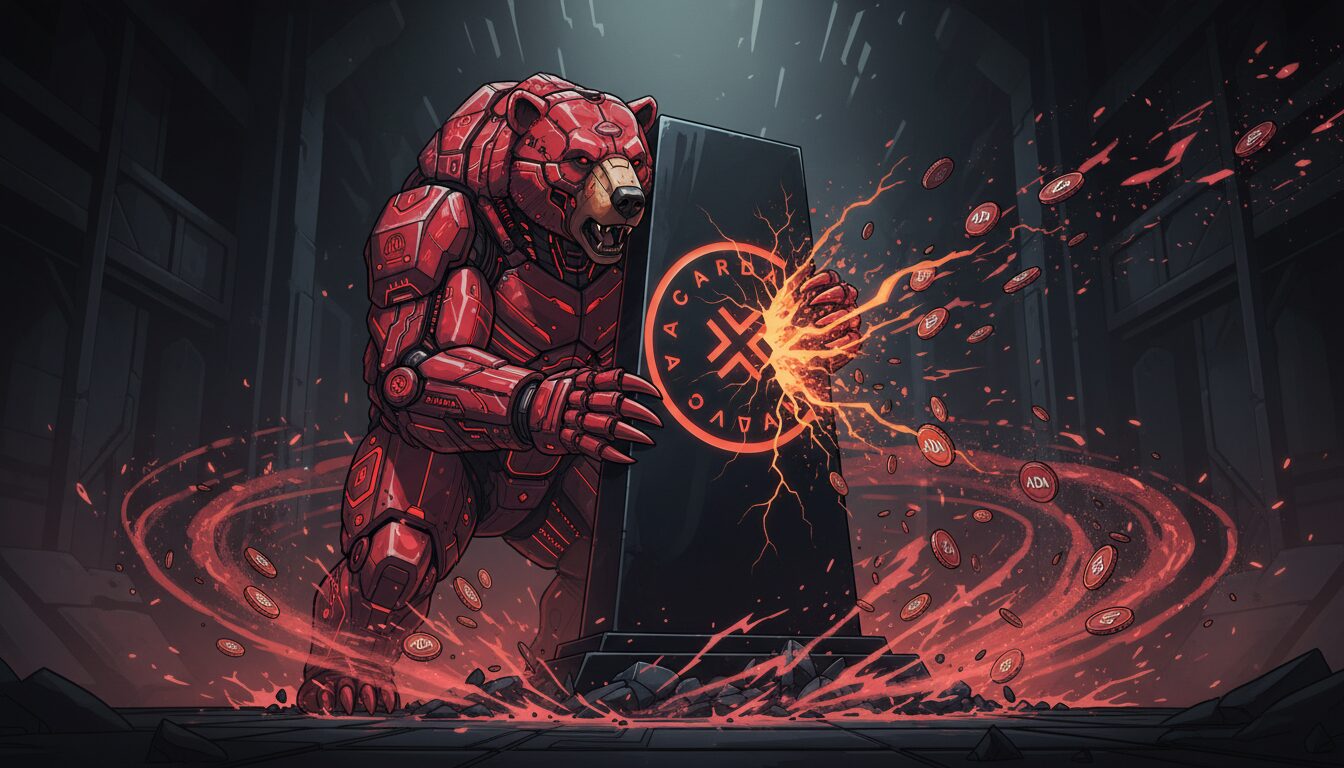Cardano Price Under Pressure After Network Bug Shakes Market Confidence

Cardano’s ADA token saw its price dip below the key $0.40 level following the disclosure of a network partition bug that has created anxiety among traders. The incident, which temporarily split the blockchain, has been addressed by developers, but market sentiment remains fragile.
In a detailed report, teams from Input Output Global (IOG), EMURGO, and Intersect explained that the issue originated from a bugged transaction on November 21. This transaction allowed an oversized hash to slip past initial checks, exploiting a legacy vulnerability from 2022 and causing the chain to divide into two competing histories. The core development teams confirmed that no user funds were compromised during the event.
To resolve the partition, Cardano Stake Pool Operators and exchanges are actively upgrading their systems to new node versions. The teams also noted that updates to affected wallets would not require any user action to reconcile on-chain data. While these efforts to restore normal operations are underway, the disruption has already impacted the derivatives market.
Derivatives Data Reveals $7.5 Million in Liquidation Risk
The network incident contributed to a 3% price decline for ADA over a 48-hour period, pushing traders to reassess their positions. Analysis from Coinglass’s 30-day Liquidation Map, which tracks leveraged positions, highlights significant downside risk. Over the last month, traders have placed $91 million in short positions compared to just $11.5 million in active long positions.
A major point of concern is a large liquidation cluster of long positions, totaling $7.5 million, concentrated around the $0.38 price mark. With limited liquidity support below this level, the market is exposed to a potential flash crash that could send ADA’s price toward $0.31.
Looking ahead, a smooth completion of the network upgrades could help ADA reclaim momentum and push back toward the $0.40 mark. The Cardano team has also prepared a disaster recovery plan, based on a proposal known as CIP 135, as a standby measure to address any further anomalies during the transition to the patched chain.
Disclaimer: The information provided in this article is for informational purposes only and does not constitute financial advice, investment advice, or any other sort of advice. You should not treat any of the website’s content as such. Always conduct your own research and consult with a professional financial advisor before making any investment decisions.










